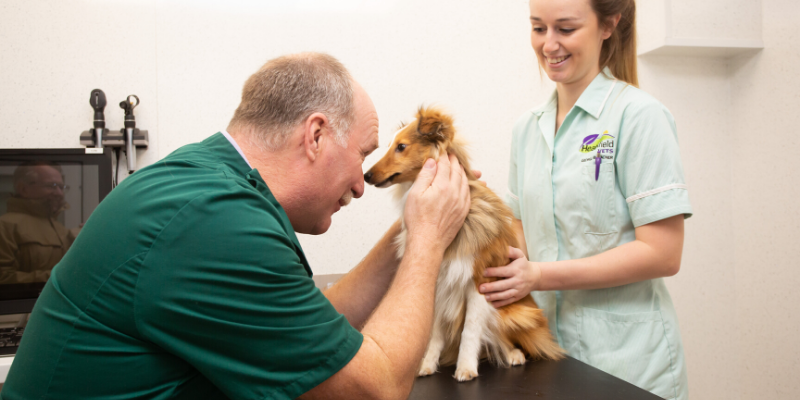
Pet insurance is not like car insurance, it is incredibly likely that you will need to make a claim for you pet throughout their lifetime. This is why it’s so important to choose a pet insurance policy that offers the level of cover that you would need to cover treatment costs for your pet if they were injured or became ill. The question to ask is ‘will I be able to cover the costs that my insurance company will not?’.
Is my policy limit high enough?
We take out insurance for our pets to cover the costs we would not be able to afford ourselves, so it’s best to think about the worst case scenario where pet insurance would be vital. The most expensive treatment your pet may need is likely to be referral to a specialist for diagnostic imaging, such as an MRI or CT scan and possibly surgery. This can run anywhere from £5000-£15000 depending on the severity of the condition. Referral is thankfully quite rare, but even more common conditions like an accidentally ingested sock or a lump which needs to be removed, can run into the thousands to properly diagnose and treat. If you do opt for a policy with a smaller cover limit, are you able to pay above this for your pet’s treatment?
Can I afford my excess and co-payment?
Your fixed excess is the amount you will need to pay towards a claim for each separate condition, per policy year, this is usually between £90-£150. This means your insurance company will only pay anything out on claims over this fixed excess amount. A co-payment is a percentage of the claim that will be deducted from the claim. For example if your policy has a 20% co-payment and a £100 fixed excess and you make a claim of £1500, they will deduct £100 plus £280 from the claim payment. It is common for pet insurance companies to include a co-payment on polices for older pets, though some may include a co-payment on any policy in exchange for a lower premium. Think about what would happen if you needed to make a large claim on your insurance; are you able to afford to pay 20% of a bill in the thousands?
Will this cover my pet for lifelong conditions?
The three most common insurance policies are lifetime, maximum benefit and time limited. A lifetime policy will offer a pot of money (your yearly policy limit) which will renew each year. A maximum benefit policy will cover your pet for a condition up to a maximum amount but with no time limit, whilst a time limited policy will cover your pet up to a certain amount or for a maximum on 12 months, whichever is reached first. Some of the most common conditions claimed for are chronic conditions which can require treatment for the whole of your pet’s life, such as allergies, arthritis, diabetes or heart disease. Try to think about how each of these policies would cover these costs. A lifetime policy would cover your pet for this condition throughout their life. A maximum benefit policy would cover them until the ‘pot’ of money runs out, which if this pot is a low amount, may leave you with years of treatment to pay for. A time limited policy will cover your pet for the first year of treatment, after which you would need to cover the costs yourself.
Does this policy include any caps on the cost of treatment?
Some policies may include a cap on certain procedures, consultations or treatments which can heavily impact how much your policy will pay out on a claim. We have listed the most common items that can be capped in certain policies, as well as a rough estimate of their cost.
MRI or CT scan – £3000-£4000
Out of hours consultation – £300-£400
Histology and cytology testing – £100-£150
Cruciate surgery – £3000-£5000
In simple terms, if your policy has a cap of £750 on an MRI scan, regardless of your policy limit, they will only pay up to £750 for this procedure, leaving you to pay the rest.
Will this policy be suitable for the lifetime of my pet?
Unlike car or home insurance, pet insurance is a medical insurance which means that if you decide to change policies part way through your pet’s life, pre-existing conditions will not be covered, or may only be covered if your pet has been symptom and treatment free for a few years, depending on the policy. This isn’t just conditions they’ve been treated and received a diagnosis for, but any symptoms or previous instances which form part of your pet’s medical history. For example, if your pet has had intermittent lameness and it is later diagnosed as arthritis but you’ve changed pet insurance company in between, then any treatment for this is unlikely to be covered. This can make it difficult to change pet insurance to a more suitable policy later in your pet’s life, so it’s recommended you take out an appropriate policy from the start.
It’s also worth keeping in mind that the policy limits for the policy overall or the caps on treatment do not increase as your pet ages – the policy you take out for a puppy and kitten now may be adequate for the costs of care at this stage – what happens in ten years’ time when the cost of veterinary care has increased in line with inflation?
Pet insurance is there so that if the worst happens, you can protect your pet. When thinking about how to finance your pet’s care, it’s worth considering the emotional difficulty of having to decline care due to cost. We strongly recommend you check the policy documents so you know exactly what will be covered and how much for. Most issues of the issues we see with disappointing insurance outcomes is because people have not read their policy documents to understand what their policy actually covers. For more information about pet insurance, please see the other articles on this topic in our pet care library.
Call us on 01435 864422 if you have concerns about your pet’s insurance.

